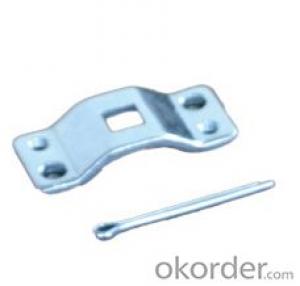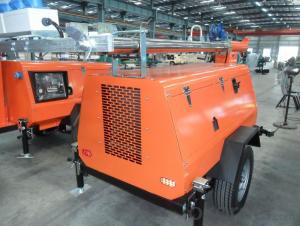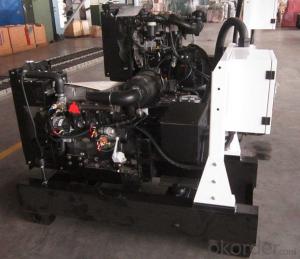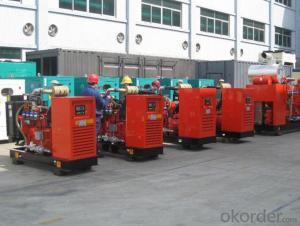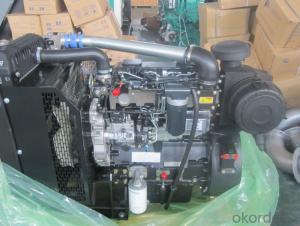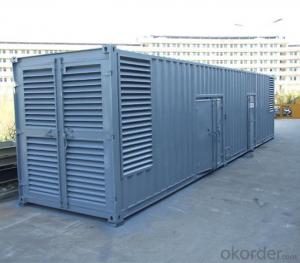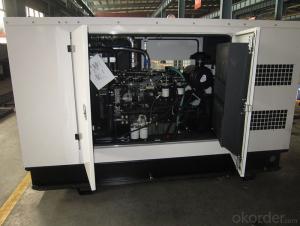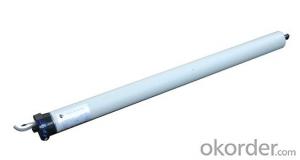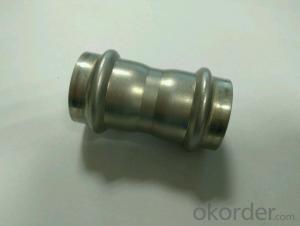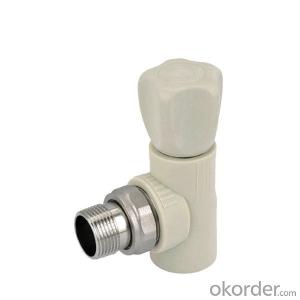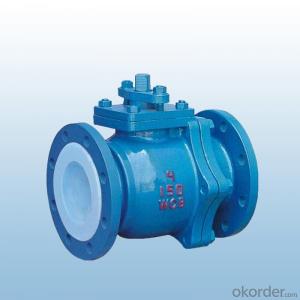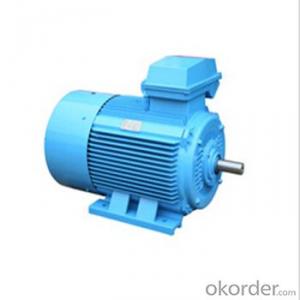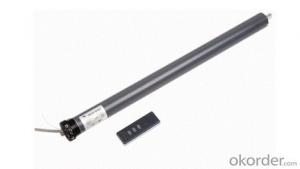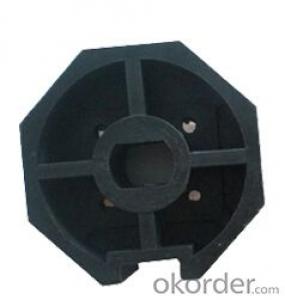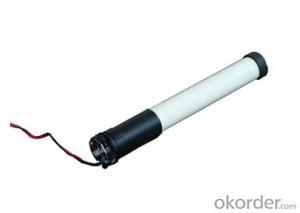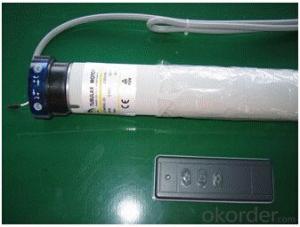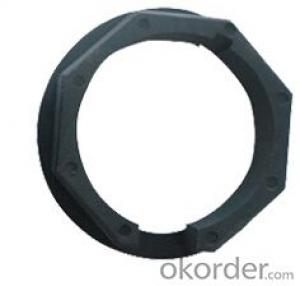Tubular motor accessory Large bracket CE TUV
- Loading Port:
- Ningbo
- Payment Terms:
- TT OR LC
- Min Order Qty:
- 500 set
- Supply Capability:
- 400000 set/month
OKorder Service Pledge
OKorder Financial Service
You Might Also Like
Specifications
Tubular motor for roller shutter, electric awning, motorized blind, Roma shade;
Used for rolling windows, doors, blinds, screens and rolling shutters.
Projection screen, skylight shade, sunshade, sun protection, rolling door drive, security shutter operator.
CE, TUV, RoHS, CCC, ISO9001 certificated,
Safety, Energy saving, High efficiency, Long life time,
Low noise, Low temperature increasing, Low maintenance cost.
Standard: TUV, CE, CCC, UL
Productivity: 300, 000pcs/year
Origin: China
Packing: 6pcs/ctn, 1pc/colour box
Min. Order: 500pcs
Transportation: By sea or by air
Features Tubular motor for roller shutter:
1) Voltage: 230V/50Hz
2) Input power: 117W/ 215W
3) Current: 0.49A /0.92A
4) Speed: 12/16/25rpm
5) Torque: 10/15/20/30/40/50N. M
6) Working duration: ≥ 4min
7) Insulation classification: B
8) Protection classification: IP44
9) Certification: CE, TUV, CCC, ISO9001-2008 ROHS,
Outer packing Tubular motor for roller shutter:
6pcs/carton with foam in it
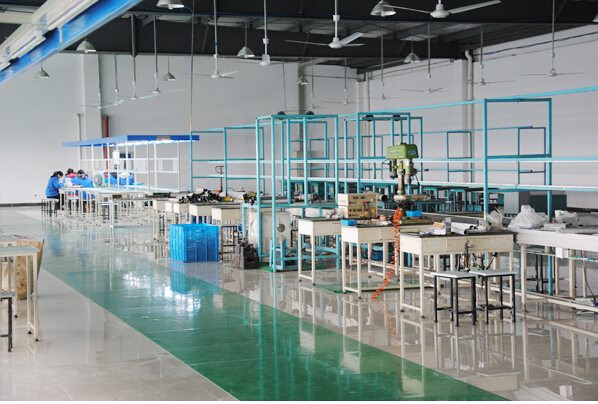
- Q:What is excitation, excitation current, what is the difference between motor and generator
- The excitation current is provided by the independent power supply for the motor excitation winding. For example, the use of an independent dc power source for the excitation winding of a dc generator; The electromagnetic field of the armature winding of the asynchronous motor is generated by ac power supply. The former is the dc excitation, the latter is the exchange excitation. Synchronous motor according to the situation of the power grid, can be a rotor field winding dc excitation, can also be provided by the grid ac excitation on the stator, the general is given priority to with dc excitation. If the dc excitation is insufficient, then the reactive reactive current from the grid input is added to the motor. If the dc excitation method is overused, the motor will output the backward reactive current to the grid, weakening the internal magnetic field of the motor. When the dc excitation is adopted, the voltage drop in the excitation circuit is only caused by the resistance, the excitation voltage is low, and the excitation power supply is small. With the use of ac excitation, the excitation voltage is much higher, and the capacity of excitation power supply is much higher.
- Q:The ac motor doesn't have a brush so how does the rotor rotate?
- If you remove the core, you will see something like a coil, usually made of easily conductive metals such as copper or aluminum. Because ac power is a three-phase alternating current of the sine wave, a rotating field is formed on the coils, so there is less of a dc motor.
- Q:If the motor through reducer drive the load, the load moment of inertia is to convert to the motor shaft, namely, divided by the square of reduction ratio, and, after conversion of moment of inertia of the moment of inertia/motor = inertia ratio?
- Yes, in the transmission shaft system, the rotational inertia of the axis of rotation is the output axis of inertia (Je) to the calculation axis reduction of the ratio squared (I squared). In other words, from the low speed axis to the high-speed axis, the high-speed axis rotational inertia (Jo) = low velocity axis rotational inertia (J1) is the reduction of the speed of the inertia (I squared). From the high speed axis to the low-speed axis, the inertia of the low speed axis (J1) = high speed axis rotational inertia (Jo) x reduction (I squared). In the calculation, the deceleration ratio is greater than or equal to 1, which is the low speed shaft tooth number/high gear number. The high-speed axis is usually the motor shaft.
- Q:Can two phase ac motor not be able to install governor?
- Small power can, high power (with centrifugal switch) not ok.A resistance governor can be installed
- Q:Single phase capacitor ac motor speed regulation why does not have corresponding frequency converter
- Single-phase ac motor from principle is converted by the three-phase ac motor, is just one of the phase is generated by capacitance mobile phase 90 degrees, if meet with frequency conversion governor drive the work by the capacitance of the problem. The variable frequency governor has the input single phase 220v, the output three phase 220v variety, only choose Star/Angle 380v / 220v triphase motor will work.
- Q:What is an ac driver? And the principle! Thank you very much!
- Low frequency characteristics In low speed, the step motor is prone to low frequency vibration. The vibration frequency is related to the load condition and drive performance, and the frequency of vibration is generally considered to be half the frequency of the motor. The low-frequency vibrations, determined by the principle of stepping motor, are very bad for the normal operation of the machine. When the stepper motor work in low speed, general damping technology should be adopted to overcome the low frequency vibration phenomenon, such as add damper on motor, or drive the segmentation technology, etc. Ac servo motors are very stable, even at low speeds. Ac servo system has a resonance suppression function, can cover the mechanical rigidity, and internal system has the function of frequency resolution (FFT), can detect the mechanical resonance point, is advantageous for the system adjustment. Three, the moment frequency characteristic is different The output torque of the stepping motor decreases with the speed of the revolution, and falls sharply at high speed, so the maximum working speed is 300 ~ 600RPM. Ac servo motor for constant torque output, that is, at its rated speed (2000 RPM and 3000 RPM) of less than, can be rated output torque and constant power output above the rated speed for.
- Q:What is the difference between the three-phase ac motor and the second phase
- No two phase motor, what do you mean by two phase motor is single-phase motor, is to connect two wires of that kind of, ha ha, is that after a fire a zero line, the so called single phase motor, three-phase motor is undoubtedly pick three root wire (wire is phase line, commonly known as wire), common single-phase motor rated voltage is 220 v, are not commonly used in industrial production, mainly used in civil, as there is no the three-phase motor is single-phase motor efficiency is high, so once the power requirements in kilowatts, or a few kilowatts can choose three-phase motor, like a home of the motor is single-phase motors, because the load is small, like some big motor in industrial production to 5000 kw, if the single-phase motor, if nothing else, the line is much more rough!
- Q:What is the difference between the excitation winding of ac motor and the armature winding?
- Only the synchronous generator and the synchronous motor have excitation winding and armature winding. The general ac asynchronous motor is not excitation winding. Squirrel-cage asynchronous motor points and winding type two kinds big, the same stator winding structure, the squirrel-cage rotor cage bar, wound rotor rotor coil is an external device (can change the rotor impedance to realize variable speed). The "armature winding" is the "main power circuit" of the motor. Which power of the rotor and stator coil is "armature", needless to say, most stator coils are "armature winding".
- Q:What is the difference between asynchronous and synchronous in the three-phase motor?
- Synchronous motor is the ac motor, the stator winding is the same as the asynchronous motor. The rotational speed of its rotor is the same as the rotational field produced by the stator winding, so it is called the synchronous motor. As a result of this, the current of the synchronous motor is in phase over the voltage, the synchronous motor is a capacitive load. For this reason, in many cases, the synchronous motor is used to improve the power factor of the power supply system. There are two kinds of synchronous motors in the structure: 1, the rotor USES direct current for excitation. It made salient pole rotor type, installed on the magnetic core field coil is in series, connect with alternation of opposite polarity, and there are two root lead connected to the two above the slip ring mounted on the shaft. Field coil is made by a small dc generator or battery to motivate, in most of the synchronous motor, dc generator is mounted on the motor shaft, used to supply the rotor pole coil excitation current.
- Q:Why does a single motor have a series of capacitors
- As we all know, the rotation of the ac motor on electric current produced by a rotating magnetic field, and single-phase motor is different from the three-phase motor, three-phase motor through 120 degrees is the difference in phase and three phase current, can produce a rotating magnetic field; And single phase motors through the single phase current does not produce a rotating magnetic field, need to take some methods to make it produce a rotating magnetic field, using capacitance is one method, which is the most common method, capacitance is used to split phase, the purpose is to make two spare set of the current produce nearly 90 ゜ phase difference, in order to produce a rotating magnetic field.
1. Manufacturer Overview |
|
|---|---|
| Location | |
| Year Established | |
| Annual Output Value | |
| Main Markets | |
| Company Certifications | |
2. Manufacturer Certificates |
|
|---|---|
| a) Certification Name | |
| Range | |
| Reference | |
| Validity Period | |
3. Manufacturer Capability |
|
|---|---|
| a)Trade Capacity | |
| Nearest Port | |
| Export Percentage | |
| No.of Employees in Trade Department | |
| Language Spoken: | |
| b)Factory Information | |
| Factory Size: | |
| No. of Production Lines | |
| Contract Manufacturing | |
| Product Price Range | |
Send your message to us
Tubular motor accessory Large bracket CE TUV
- Loading Port:
- Ningbo
- Payment Terms:
- TT OR LC
- Min Order Qty:
- 500 set
- Supply Capability:
- 400000 set/month
OKorder Service Pledge
OKorder Financial Service
Similar products
New products
Hot products
Related keywords
